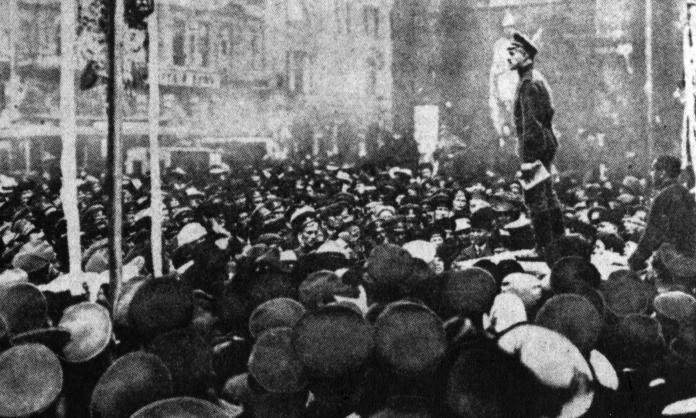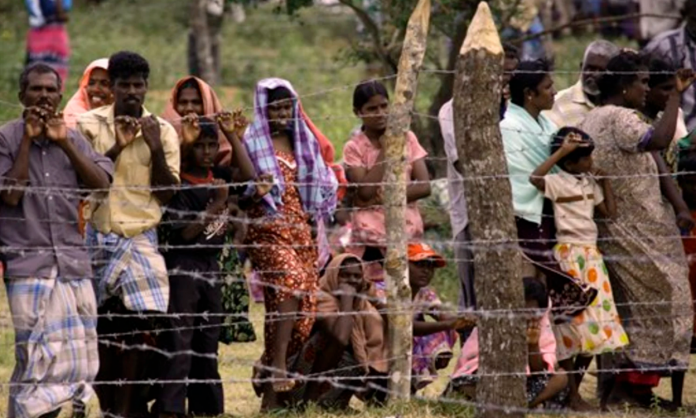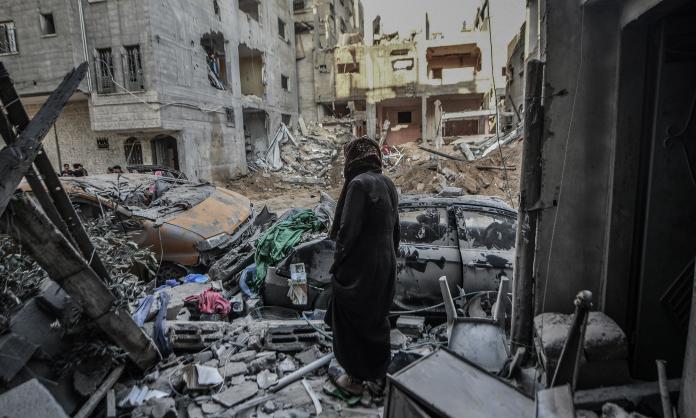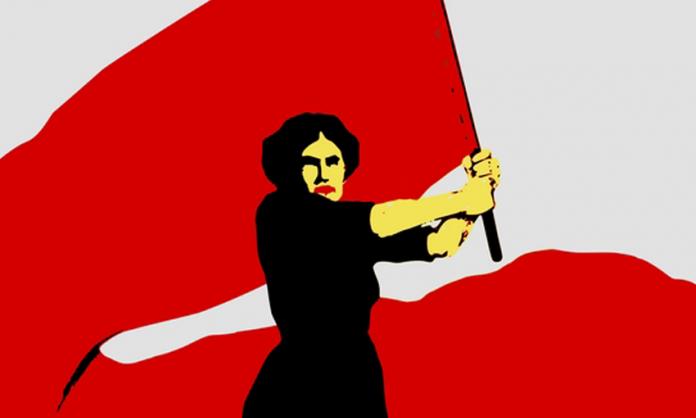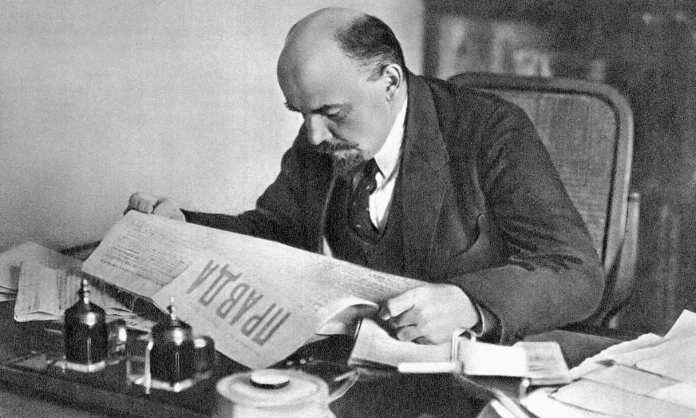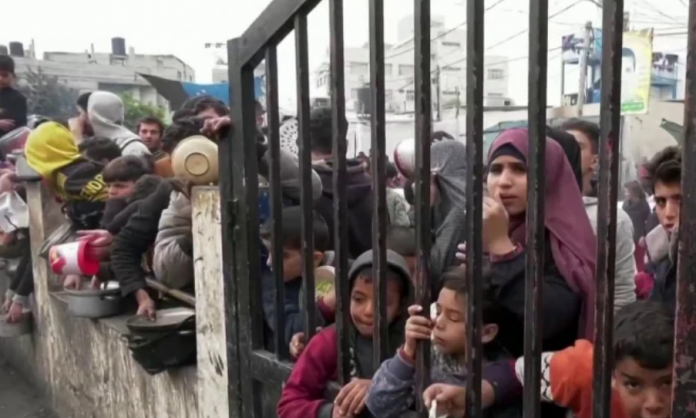The Russian Revolution of 1917 changed everything. Here’s why, over 100 years later, it’s still vital to study this momentous event.
It was the first time workers seized state power
In October 1917, the working class in Russia went further than any have before or since: they took power away from the capitalist government and replaced it with control by and for workers.
This new form of government was based on the soviets, or workers’ councils.
The soviets were a different kind of representative body from the privileged, unaccountable parliaments of capitalism. Delegates were elected from workplaces. They remained in the workforce, were paid the same wage as a skilled worker and were subject to immediate recall. This meant they were directly known and accountable to the people who elected them.
These soviets were set up during the February revolution, which overthrew the tsarist dictatorship. They developed as a way to organise, debate and push forward the struggle.
District and city-wide soviets authorised an eight-hour working day and democratisation of the army. Soldier and peasant soviets were established. Inside workplaces, factory committees organised everything from maintenance work to political meetings.
Crucially, these democratic organisations overcame the capitalist divide between politics and the economy. Real power in capitalism is not held by elected representatives, but by corporate boards and billionaires. Parliament rarely encroaches on their control of the economy, and when it does, the capitalist class can overpower it.
Based in the factories, the power of the soviets rested on workers’ control over production. It directly challenged the capitalists’ rule. When, in March, the Petrograd city soviet signed a deal with an employers’ organisation for an eight-hour day, this recognised a reality that had basically been enforced already at the point of production by workers themselves.
In August, when the right-wing general Kornilov tried to crush the revolution, railway and telegram workers were able to use their control over transport and communication to sabotage the attempted coup.
By democratising the workplace, the revolution had a profound effect on everyday life. Every factory or soldiers’ barracks was turned into a place of debate and discussion. Old assumptions were shaken. In a deeply sexist society, women became increasingly involved in political organising.
Initially the soviets operated alongside the capitalist Provisional Government, made up of the unelected remnants of the old tsarist parliament. In October, this capitalist government was overthrown and replaced by soviet power, demonstrating that it is possible for workers to lead a socialist revolution and run society in their own interests.
The new soviet state embarked on a series of path-breaking reforms in health care, education and work. It made major advances in the rights of women and LGBTI people. And it ended Russia’ s involvement in the imperialist slaughter of the First World War.
Russia’s revolution shows that workers’ power is the path to the radical change we need.
It shows us the role of a revolutionary party
This revolution could never have succeeded without the Bolshevik party.
The Bolsheviks were a revolutionary socialist party. They were the most radical of the political forces in Russia. They called for an end to the capitalist Provisional Government and for all power to be transferred to the soviets of workers, soldiers and peasants.
At the start of the revolution, support for the Bolsheviks and their radical politics was a minority position in the workers’ movement. The largest parties in the soviets were the moderate socialists who argued for continued political support for the Provisional Government. This left power in the hands of the capitalists.
Even at the heights of struggle, workers can hold onto ideas absorbed through years of capitalist oppression. Most of the time, workers and other ordinary people get little say over how society is run. Bosses and managers make decisions about working life, economic decisions are made by corporate boards and government policies decided by politicians and state bureaucrats. When most people think of who has the power to reshape society, they look to the government. Within the working class, this reinforces reformism, which seeks to implement socialism through parliamentary institutions.
These ideas persisted even after the February revolution, and they were backed up by the arguments of the moderate socialists. While most workers distrusted the unelected elites in the Provisional Government, the moderate parties argued for compromise, even taking leading positions in the government.
The continued support for the Provisional Government meant many of the aspirations of the revolutionary workers, soldiers and peasants went completely unfulfilled. Russia’s involvement in the violent slaughter of the First World War continued, and land stayed in the hands of rich landlords.
It took the intervention of a revolutionary party like the Bolsheviks to overcome the influence of the moderate socialists.
Over decades, the Bolsheviks and their central leader, Lenin, had built the party through intervention into the struggles and debates of the Russian working class movement. Navigating the ups and downs of class struggle and state repression, the Bolsheviks debated other political currents, made connections with worker militants and struggled alongside them.
This meant that in 1917 they were in a position to intervene into the heightened debates and struggles of the revolution. This struggle exposed the flaws of the moderate socialists and demonstrated to the masses that the Bolsheviks were right: the Provisional Government had to be overthrown and replaced with soviet rule.
The Bolsheviks were able to grow from a party of a few thousand, in the minority in the soviets and with many of their best leaders in exile, into a mass party of the working class with around a quarter of a million members and a majority in the soviets. Through each twist and turn, they advanced the case for workers’ power, culminating in the successful insurrection in October. This overthrew the capitalist state and established a government of soviets: the first time workers had ever taken state power.
The history of the Bolsheviks shows that workers can organise to fight for revolutionary socialist politics. It shows that with organisations like that, revolutions can win out against their enemies. That’s the kind of organisation we need to build today.
It shows why we need internationalist politics
Marx and Engels’ Communist Manifesto ends with a famous call for international solidarity: “Workers of the world, unite!” In their lifetime they established an organisation bringing together the workers’ movements of different countries, known as the First International.
In the capitalist system, blocs of capital compete against each other in the drive for profits. This competition drives ever larger blocs to seek out new markets and resources in opposition to their rivals. On a global scale, this results in a world divided between imperialist powers.
Working class internationalism is a recognition of the fact that workers have no stake in this competition. Siding with “our” nation only binds us to our exploiters, while dividing us from workers in other countries.
In the decades prior to the Russian Revolution, such internationalism seemed to be uncontested among socialists. Working class parties were part of an international socialist movement and allied together under the banner of the Second International. This international stood against the growing threat of war, which characterised the start of the 20th century.
But when the war broke out in 1914, this movement was shattered. Most of the parties of the Second International abandoned their internationalist principles. They joined with their nations’ ruling classes in support of sending workers to the imperialist slaughter.
The Bolsheviks were one of the few to stand against this nationalist fervour, calling for a workers’ revolution to end the war. They led resistance to the war wherever they could, while the brutal reality of battle radicalised workers and pushed them into further revolt. Internationally, they worked to cohere anti-war socialists and lay the basis for the re-emergence of a revolutionary socialist movement.
Just as the globally interconnected system had created a world war, the shared experience of its horrors created the basis for a world revolution. Towards the end of the war, this began to become a reality.
The victory of revolution in Russia transformed global politics. Revolution spread to Western Europe, and mass revolts spread across the world. This world revolution was crucial to the success of the revolution in Russia. Capitalism is a global system, and Russia was an underdeveloped, mostly rural society. The Bolsheviks knew that if their revolution didn’t spread, then it was doomed. A socialist society could never be built in poverty-stricken Russia alone. Their only hope was revolt elsewhere.
Revolts did break out outside of Russia, but ultimately they failed, held back by the weakness of the revolutionary movements. The revolution was isolated, surrounded by capitalist reaction.
Socialism must be an anti-imperialist, internationalist movement, based on building solidarity among workers all over the world. It can’t be built in a single country at the expense of others.
Its defeat shaped the next century of politics
This isolation laid the basis for a defeat that still reverberates today.
In Russia, production collapsed and with it the power of the working class. The soviets remained in name only, with the democratic life that animated them destroyed by poverty and starvation. Increasingly it was the state bureaucracy that took charge of society.
Stalin became the political leader of this growing bureaucracy, eventually leading a counter-revolution that destroyed the revolution’s gains. A vicious campaign of state terror and repression targeted political opponents. All opposition was outlawed, and political and economic power was concentrated in the hands of the bureaucracy.
This counter-revolution had devastating results in Russia, but the impact on world politics was even more destructive. While they overturned the core ideas of Marxism, the new bureaucracy continued to claim the name. Socialism came to be associated with the Stalinist regime, rather than the international struggle of the working class.
After the Russian Revolution, revolutionary workers parties had gained a mass working class membership and following, with people inspired by the example of revolt. These Communist parties were now transformed into tools of the new Russian ruling class. These parties became a barrier to workers’ liberation. In Germany, the Communist Party’s policies ruined the possibility of an effective struggle against Hitler.
Stalinism has also held back generations of activists from properly exploring socialist ideas. Marxism has been both distorted and discredited by its association with Stalin’s regime. This has cut off activists from the legacy of revolutionary working class politics, which remains the only solution we have to the horrors of global capitalism.
Only by really studying and understanding how Stalinism distorted and betrayed the legacy of the revolution can we rescue the revolution’s lessons and build on its achievements.
The high point of working class politics remains the Russian Revolution. As long as we continue to struggle against capitalism, we need to return to and study it, to learn from its successes, understand its defeat and rebuild today the vital tradition of revolutionary socialism.




